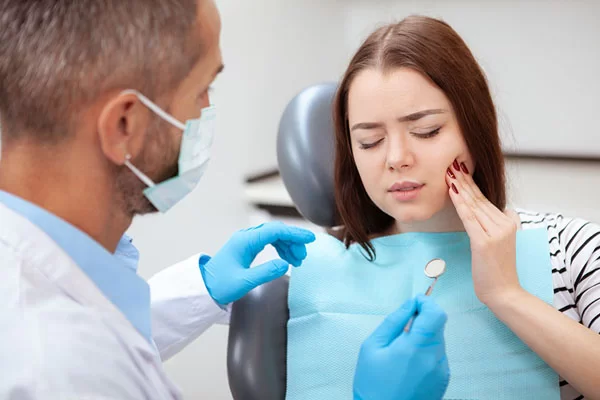Do You Recognize the Signs of Gum Disease?
Gum disease, also known as periodontal disease, is one of the most prevalent oral health issues, affecting millions of people annually. But how do you know if you’re at risk or experiencing its early signs? At our dental office in Tacoma, WA, we’re here to help you understand the symptoms of gum disease and the factors that might make you more susceptible.
If you suspect you might have gum disease, don’t wait—early treatment is crucial for preserving your smile. Call us today at (253) 761-5422 to schedule an appointment. We proudly serve patients in Tacoma, Lakewood, Puyallup, Federal Way, Gig Harbor, and University Place.

Common Symptoms of Gum Disease
1. Red, Tender, or Swollen Gums
Healthy gums are firm and pale pink. If you notice redness, tenderness, or swelling, these could be warning signs of gum disease:
- Redness: Inflamed gum tissue often appears dark red due to increased blood flow caused by infection.
- Tenderness: Sore or sensitive gums, especially when brushing or eating, may signal underlying problems.
- Swelling: Puffy gums indicate inflammation and can create an uneven gum line.
2. Bleeding Gums
Do your gums bleed when you brush or floss? While occasional bleeding might seem harmless, persistent bleeding is one of the earliest signs of gum disease symptoms.
- During brushing or flossing: Blood on your toothbrush or floss is a red flag.
- Spontaneous bleeding: Noticing blood during routine activities like eating or waking up with it on your pillow may indicate advanced gum disease.
3. Receding Gums
Gum recession exposes the sensitive roots of your teeth, causing discomfort and making your smile appear uneven.
- Longer teeth: Notice your teeth looking longer than usual? This could result from gum recession.
- Increased sensitivity: Exposed tooth roots often lead to discomfort when consuming hot, cold, or sugary foods.
4. Loose or Shifting Teeth
Advanced gum disease can weaken the structures supporting your teeth, leading to:
- Loose teeth or a shifting bite alignment
- Gaps forming between teeth
- Potential tooth loss without timely intervention
5. Bad Breath (Halitosis)
Chronic bad breath may not be just a hygiene issue—it’s often linked to bacterial buildup from gum disease. The accumulation of plaque releases odor-causing compounds that brushing alone won’t resolve.
6. Pus Between Teeth and Gums
In severe cases, you might notice pus oozing from your gums, often accompanied by a bad taste or foul smell. This is a hallmark of advanced periodontal infection that requires immediate attention.

Gum Disease Risk Factors
Certain lifestyle choices, medical conditions, and even genetics can increase your likelihood of developing periodontal disease:
- Poor oral hygiene: Inconsistent brushing and flossing can allow plaque to harden into tartar, leading to gum disease.
- Tobacco use: Smoking or chewing tobacco significantly impairs your gums’ ability to heal.
- Diabetes: High blood sugar levels increase vulnerability to gum infections.
- Hormonal changes: Pregnancy, menopause, or hormonal fluctuations can heighten gum sensitivity.
- Age: Older adults are at higher risk, especially if oral care has been neglected over time.
- Genetics: A family history of gum disease may predispose you to the condition.
- Heart disease connection: Studies suggest a link between gum disease and coronary artery disease, highlighting the importance of gum health for overall wellness.
How to Prevent Gum Disease
Good oral hygiene and routine dental care can help prevent gum disease and its progression:
- Brush twice daily using fluoride toothpaste.
- Floss every day to remove plaque and food particles from between teeth.
- Visit your dentist regularly for cleanings and early detection of gum disease.
- Maintain a healthy diet, limiting sugar and processed foods.
- Avoid tobacco products to protect your gums and overall health.
Treatment for Gum Disease in Tacoma, WA
Treating gum disease depends on its severity:
- Early-stage treatment: Improved oral hygiene and professional cleanings can reverse early gum disease.
- Scaling and root planing: A deep-cleaning procedure removes plaque and tartar from beneath the gum line.
- Advanced treatments: Severe cases may require antibiotics, laser therapy (LANAP or LAPT), or surgery.
Frequently Asked Questions
Can gum disease be reversed?
In its early stages, gum disease can often be reversed through improved oral hygiene, such as brushing your teeth twice a day and flossing regularly, along with professional dental cleanings. However, if the disease has progressed to advanced stages, it may require more extensive treatment.
How can dentists treat gum disease?
The treatment for gum disease will depend on the severity of the condition. In mild cases, improved oral hygiene and regular dental cleanings may be enough. However, more advanced cases may require scaling and root planing (a deep cleaning procedure), antibiotics, or even surgery.
Don’t Wait—Protect Your Smile Today
Gum disease can progress silently, causing irreversible damage if left untreated. Our Tacoma dental team is dedicated to restoring your oral health with compassionate care and the latest techniques.
Call us today at (253) 761-5422 to schedule your appointment and take the first step toward a healthier smile. We proudly serve patients in Tacoma, Lakewood, Puyallup, Federal Way, Gig Harbor, and University Place.





















